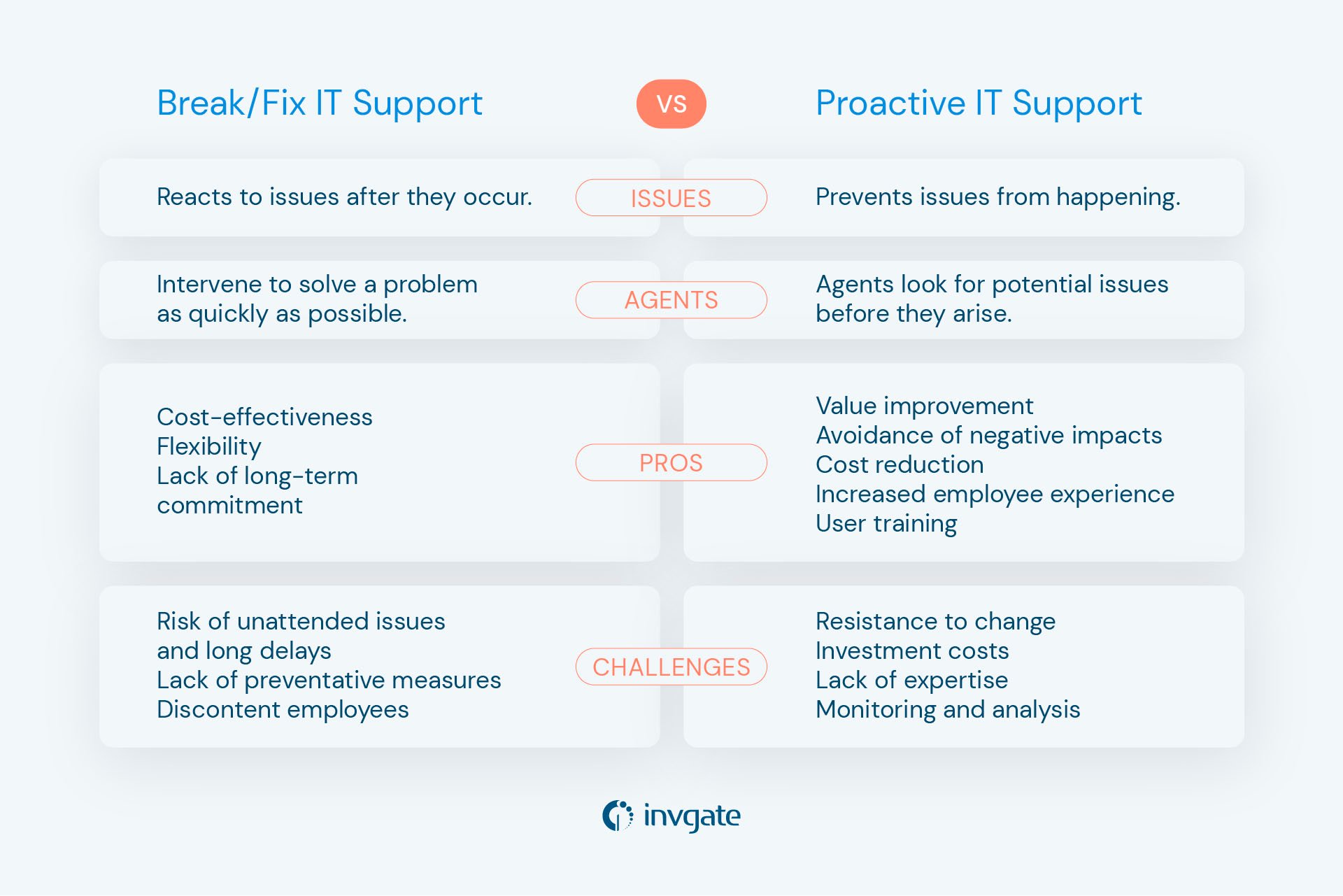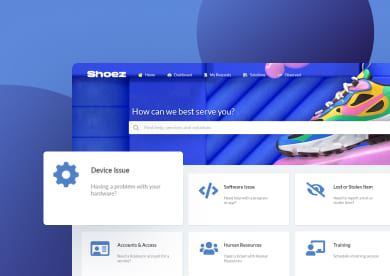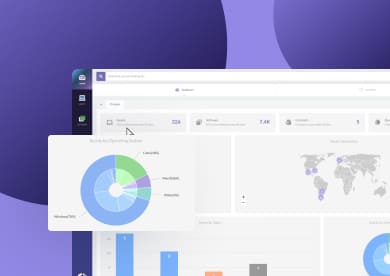Keep reading to learn how to encourage your IT team to be proactive with the right strategy and tools.

What is proactive IT support?
Proactive IT support is an approach to IT service delivery focused on identifying and resolving issues before they affect users. Instead of waiting for tickets, support teams monitor systems, analyze trends, and use automation to prevent disruptions from reaching the end user.
Unlike reactive support — which only addresses reported problems — proactive support acknowledges that many issues go unreported or unnoticed until productivity is affected. That’s why it involves more than break/fix responses. It includes activities like trend analysis, performance monitoring, user feedback tracking, and regular audits to surface weak points and act early.
As Jon Leighton, featured in episode 19 of Ticket Volume, put it:
“"With the analytics we have, we can start to spot the trends that cause incidents in the first place. So let's really get proactive and not just avoid the ticket, but avoid the disruption in the first place."”
Jon Leighton, Head of Customer Engagement and Advocacy at Nexthink
This embodies the ultimate goal of proactive IT support — eliminating potential disruptions before they impact users or the organization.
Reactive IT support vs. proactive IT support

Generally speaking, there are two main approaches to IT support: proactive IT support and reactive IT support.
- The traditional break/fix or reactive model only addresses issues once they have already occurred, and focuses on fixing them as quickly as possible.
- Proactive support brings a strategic angle to the job by encouraging agents to find potential problems before they emerge, avoiding future issues that might interfere with the end-user experience.
Benefits and challenges of offering proactive IT services
Identifying and acting before the appearance of IT issues has several benefits, including:
- Value improvement - It can lead you to identify opportunities for improving IT systems and processes and increase efficiency, productivity, and overall business performance.
- Avoid negative impacts - As you stay ahead of IT issues, you will avoid negative impacts on reputation and customer satisfaction.
- Cost reduction - Optimizing IT processes can help prevent downtime costs and decrease unnecessary hardware and software expenses.
- User training- This process will help you educate employees on how to use IT systems and tools more effectively, improving their performance.
Nevertheless, and as with any model out there, there are also some associated challenges to consider:
- Resistance to change - Some employees may resist changes to their IT systems and processes, especially if they are used to working with specific tools or workflows. Make sure to clearly communicate the benefits it will bring.
- Investment costs - Implementing proactive IT services may require upfront investments in new technologies, tools, or personnel.
- Lack of expertise - Proactive IT services require specialized skills and knowledge in order to be effective. Create workflows and knowledge base articles on InvGate Service Management to clearly explain the processes and provide your team with the right information.
- Monitoring and analysis - To be effective, proactive IT services require continuous monitoring and analysis of IT systems and processes. By integrating InvGate Service Management with InvGate Asset Management, you’ll be able to see the asset’s health status, have a complete view of your IT inventory, and manage the assets associated with any ticket.

6 ways to implement a proactive IT support strategy
Implementing a proactive IT support strategy means taking a strategic approach to managing technology infrastructure. Here are nine actions you can take towards it.
1. Detect issues before users report them
Proactive support starts with visibility. Ongoing visibility into system behavior is the starting point for proactive support. By tracking real-time data on performance, availability, and usage, IT teams can identify early indicators of problems — like high memory consumption, increased error rates, or slow response times — before they escalate into outages.
With InvGate Asset Management’s Agent you can configure automatic alerts to notify IT staff on certain issues so they can be addressed before they become bigger problems. Plus, you can customize the health rules to have an easy-to-read view of your asset’s status and security.
2. Use support trends to flag recurring problems
Repeated tickets often signal deeper issues that won't go away on their own. If several users report slow application performance or network drops in the same area, there's likely a root cause beyond isolated incidents. Proactive support focuses on recognizing those patterns early — before they escalate or spread.
To do this effectively, tag and categorize incidents by service, location, or device type. Analyze frequency and timing to surface problems that require long-term fixes. Tools like InvGate Service Management include AI features that automatically detect major incidents and highlight recurring issues across multiple tickets, helping teams prioritize what needs attention beyond the day-to-day workload.
3. Automate known fixes and standard tasks
Many issues — password resets, VPN setup, or printer configuration — follow predictable patterns. Automating these tasks removes friction for both users and IT.
Use workflow automation or self-healing scripts where applicable. Even automating triage (e.g., routing to the right technician based on keywords) reduces delays and support fatigue.
4. Offer targeted self-service with real-time updates
A self-service portal works best when it’s based on real usage and user behavior. Provide access to services users frequently request, and update articles when ticket trends change.
Include known issues or outage banners in real time so users aren’t left guessing. Track usage and feedback to improve accuracy and clarity over time.
5. Analyze change impact before implementation
A change that works on paper can still cause problems in practice — especially if it’s rolled out without considering timing, dependencies, or how it affects users in real time.
Effective change planning involves evaluating not just technical risk, but also the potential impact on support teams and end users. Include service desk input in planning and scheduling. To help with this, InvGate Service Management offers AI-powered change risk analysis based on past incidents, helping teams predict problem areas and plan smarter rollouts.
6. Schedule preventive maintenance, but align with support goals
Maintenance (updates, reboots, patching) still matters — but it should support the user experience, not just system health. Schedule downtime with minimal disruption, and monitor post-update performance for regression.
Use CMDB data and configuration baselines to identify systems at risk. Proactive support includes making sure those maintenance tasks don’t create new support demand.
Also, keep users informed about scheduled changes, outages, and ongoing issues. Well-timed communication reduces duplicate tickets and builds trust. Automate status updates when incidents are identified or maintenance is scheduled. Consider integrating service desk messages with chat tools or notifications inside your self-service portal.
Examples of proactive support
This perspective can cover a wide range of tasks. Start with the areas that need to be improved the most. A good starting point, for instance, is to identify the most common tickets and build your strategy from there.
Once you covered that, here are some other examples of proactive IT support to try:
- Testing patches – Use tools like InvGate Asset Management to identify outdated software.
- Performing trend analysis – Analyze the performance of end-users, workstations, and computers. Improve the devices that are in need of it.
- Identifying potential problems – Find issues that could become problems. One way of doing it is to analyze previous tickets and perform Incident Management.
- Applying Change Management - Implement Change Management with InvGate Service Management to apply changes in a controlled environment. Remember to register all the changes in the respective CMDB.
Proactive IT support vs. proactive IT maintenance
While proactive IT support and proactive IT maintenance share the goal of preventing issues before they arise, they serve distinct purposes. Proactive IT support focuses on enhancing the overall IT experience by addressing potential disruptions before they affect users. This includes identifying patterns, optimizing workflows, and preventing downtime to ensure seamless operations and improved productivity.
On the other hand, proactive IT maintenance centers on the upkeep and health of IT infrastructure. It involves tasks like regular system updates, hardware checks, and software patches to ensure systems remain secure, efficient, and compliant. Together, both approaches contribute to a resilient IT environment, but proactive IT support adds a user-centric layer by prioritizing employee experience and satisfaction.
Key takeaways
Proactive IT support is crucial in today's world to keep teams and their workload running smoothly.
The key is to find the right balance between being reactive and proactive. There will always be incoming tickets about issues that users run into and that you can’t prevent. However, you can anticipate some other aspects by implementing the strategies described in this article.
To boost your service and implement proactive IT support with InvGate Asset Management and InvGate Service Management, ask for a 30-day free trial!















